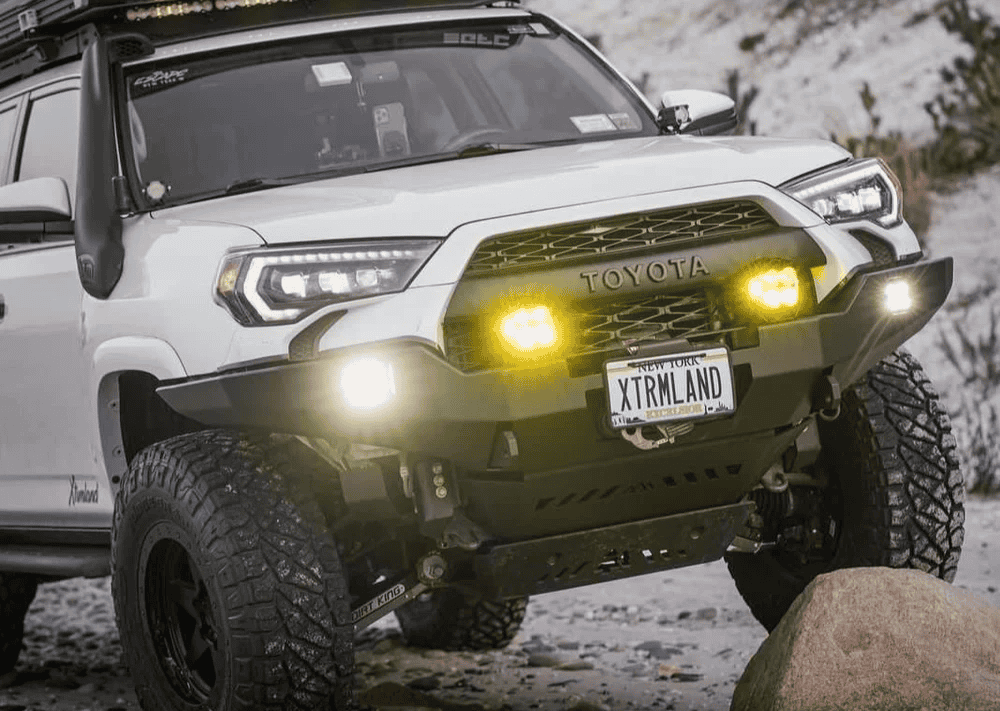Overland Vehicles

A diy truck camper build succeeds or fails on payload and center of gravity. Open your owner manual and find payload, then weigh your truck with a full tank to confirm real capacity. Subtract passengers, recovery gear, water, and food to see what is left for the camper shell build. Keep mass low and forward to preserve handling. Every pound above the bed rails raises the center of gravity, which affects emergency maneuvers and off road stability.
The core choice is frame type. A wood frame with marine plywood is friendly to common tools and easy to repair. Aluminum tube or extrusion is stiffer for weight, but requires careful cutting and corrosion control. Composite sandwich panels deliver excellent stiffness to weight but need precise bonding procedures. No matter the frame, anchor the home built truck cap to factory tie points with grade 8 hardware, large fender washers, and compression sleeves where needed. Avoid drilling the bed floor near fuel lines and always seal fastener penetrations.
Sketch the cabover length to clear the windshield during flex. Keep the door tall enough for easy entry in wet weather. Plan standing height with insulation and ceiling finish calculated, since half an inch lost to layers adds up. For a diy truck canopy, check tailgate clearances and camera or sensor locations to avoid error codes.
Selecting skins and panels is where most costs land. For a home built camper shell, consider marine plywood with epoxy and paint for durability. Aluminum composite panels are flat and resilient with minimal weight. Fiberglass reinforced plastic over foam core brings high stiffness and dent resistance. Mix materials carefully to avoid galvanic corrosion at dissimilar metal interfaces.
Fixed windows reduce leak risk. If you need sliders, pick marine grade frames with integrated tracks and screens. Roof vents should include bug screens and reversible fans for pull or push modes. Plan breathable insulation and air exchange to manage condensation from cooking and sleeping. Closed cell foam, rigid polyiso, or sheep wool all work when installed with a continuous vapor strategy and minimal thermal bridges.
A reliable homemade camper top needs a door that seals and locks. Use a continuous bulb seal around the opening with strike plates that compress evenly. Over center latches give positive pressure and can be padlocked. Add drip rails over doors and windows so rain is guided away from seals.
Weatherproofing is a process, not one product. Prime raw edges, bed every fastener in butyl tape, and finish with a flexible polyurethane or marine sealant that tolerates movement. Test with a hose and a fan on the interior to pressurize and reveal leaks. Expect to re seal after the first season as the structure settles.
Even a minimal diy truck camper build benefits from clean power. Calculate daily watt hours for lights, a small fridge, and device charging. Size a lithium battery and a DC to DC charger that fits your alternator output. Use tinned marine wire, heat shrink terminals, and fuses within inches of battery positives. Label everything. A tidy harness is easier to fix on a rainy night.
Weight high and aft makes the ride choppy, so store dense items low and forward. A convertible bed platform over drawers gives sleeping space without wasting volume. Ventilate any closed compartments that house batteries or damp gear. For a home built camper shell, a simple galley slide at tailgate height keeps cooking outside the sleeping zone and reduces condensation.
If you are asking how to make a truck camper shell that feels quiet on the highway, start with continuous panel bonding, strategic sound deadening near the cab, and rubber isolators at bed contact points. Keep exterior edges rounded to reduce wind roar. Choose a textured coating or tough paint system that hides trail pinstripes and can be touched up easily.
For builders curious about a home built truck cap in desert conditions, heat rejection matters. Light colors reduce solar gain, foil faced foam reflects radiant energy, and cross flow ventilation keeps temps manageable. Cold climate travelers should focus on thermal breaks at metal studs, controlled intake for a diesel heater, and a sealed locker for fuel canisters.
When someone searches for how to make a camper shell or how to make a truck camper shell, the real secret is iteration. Make a cardboard mockup to validate sight lines, door swing, and cabinet reach. Use paper templates for complex cuts. Dry fit everything before final bonding. A methodical approach produces a diy truck canopy that feels like a factory piece without rattles or leaks.
If you want a proven, engineered path without trial and error, our team can turn your concept into a road ready rig. See how we approach capability, sealing, and systems on the Explore overland rigs page. Ready for a bespoke solution built around your routes and payload limits? Review our process on Custom overland upfit. Want to understand how we think from first sketch to handoff? Visit Why choose OZK Customs.
We build complete custom trucks and vans that carry the comfort you need without the weight you do not. Whether you are upgrading from a homemade camper top or starting fresh, we focus on quiet cabins, clean power, and clever storage so your rig feels dialed from day one.
Ready to skip guesswork and get a professionally engineered truck canopy or full overland upfit built for your routes and climate? Tell us how you travel, and OZK Customs will design and build a rig that is quiet on the highway, sealed in storms, and dialed for real use. Fill out the form and let’s turn your sketch into a road proven build.
ADDRESS:
6159 E Huntsville Rd, Fayetteville, AR 72701
PHONE:
(479) 326-9200
EMAIL:
info@ozkvans.com